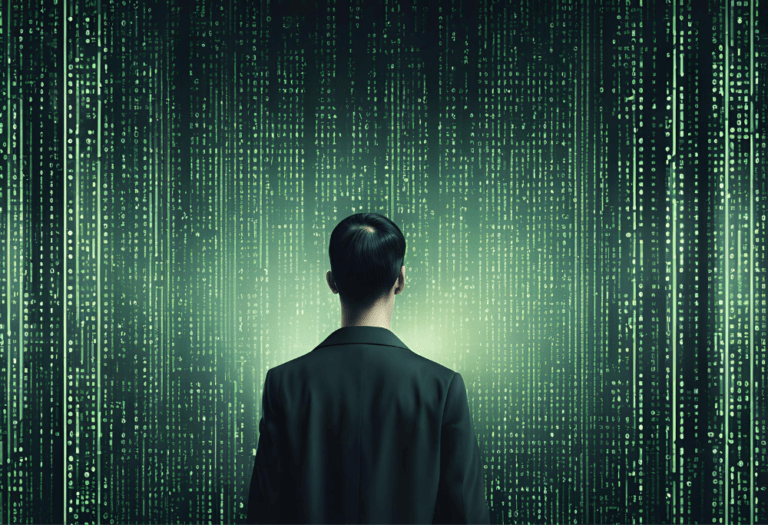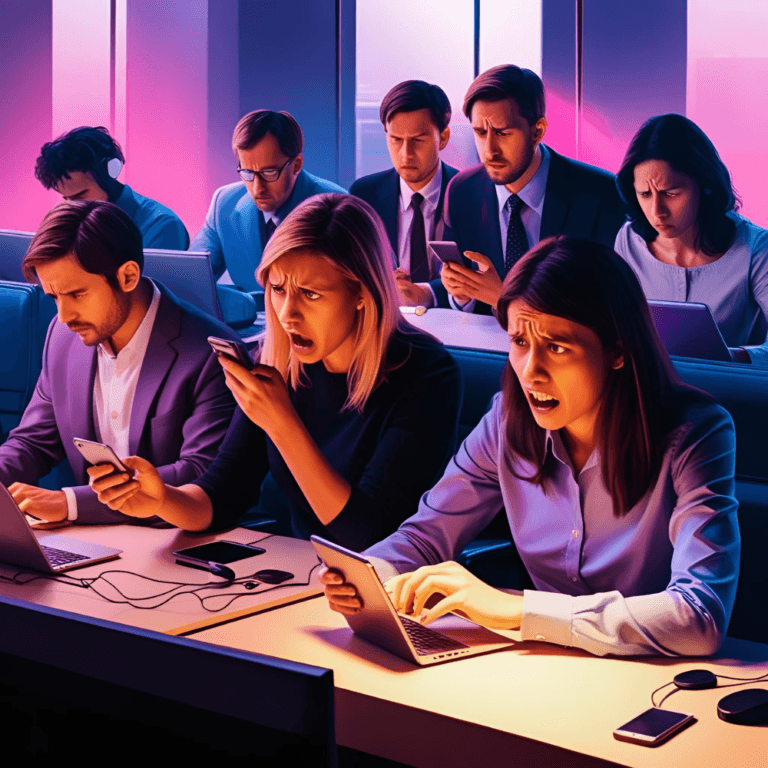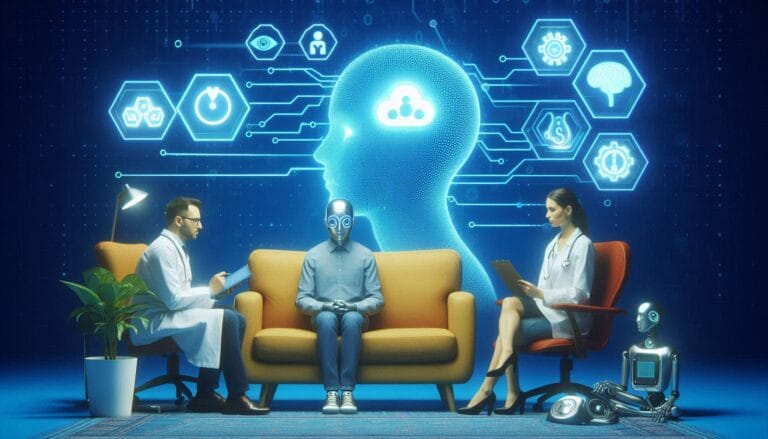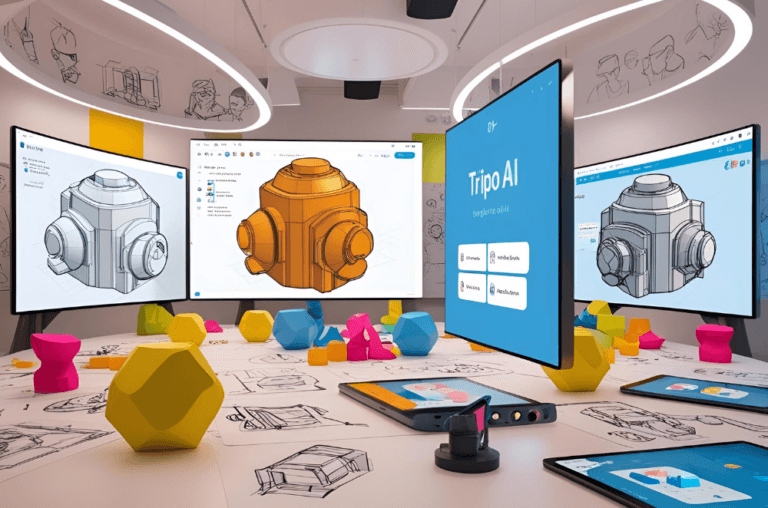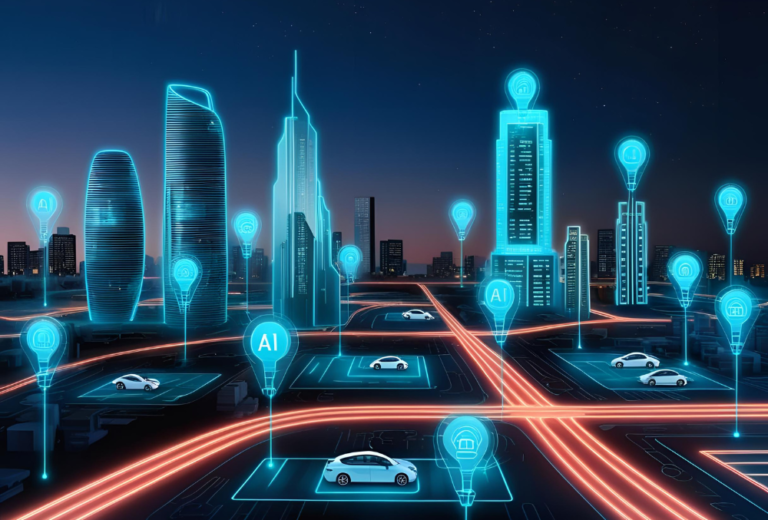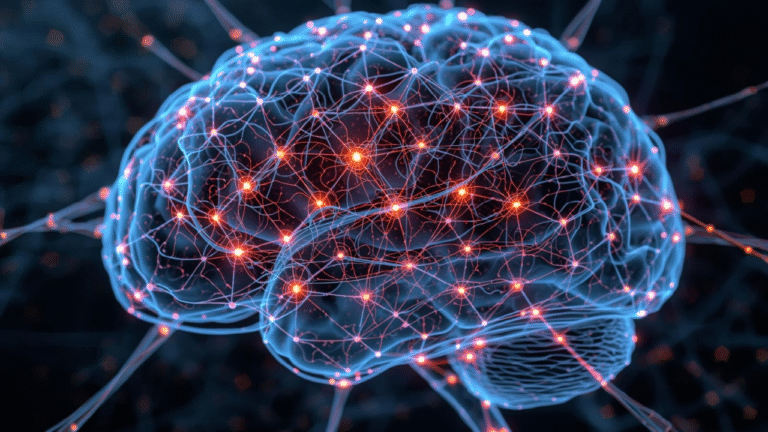Introduction: Understanding Generative AI in the Creative Industry
Generative AI, a subset of artificial intelligence, refers to systems capable of producing original content, such as images, music, text, and even videos. Unlike traditional AI, which is designed to analyze and interpret data, generative AI actively creates content using advanced models like GANs (Generative Adversarial Networks) and Transformers.
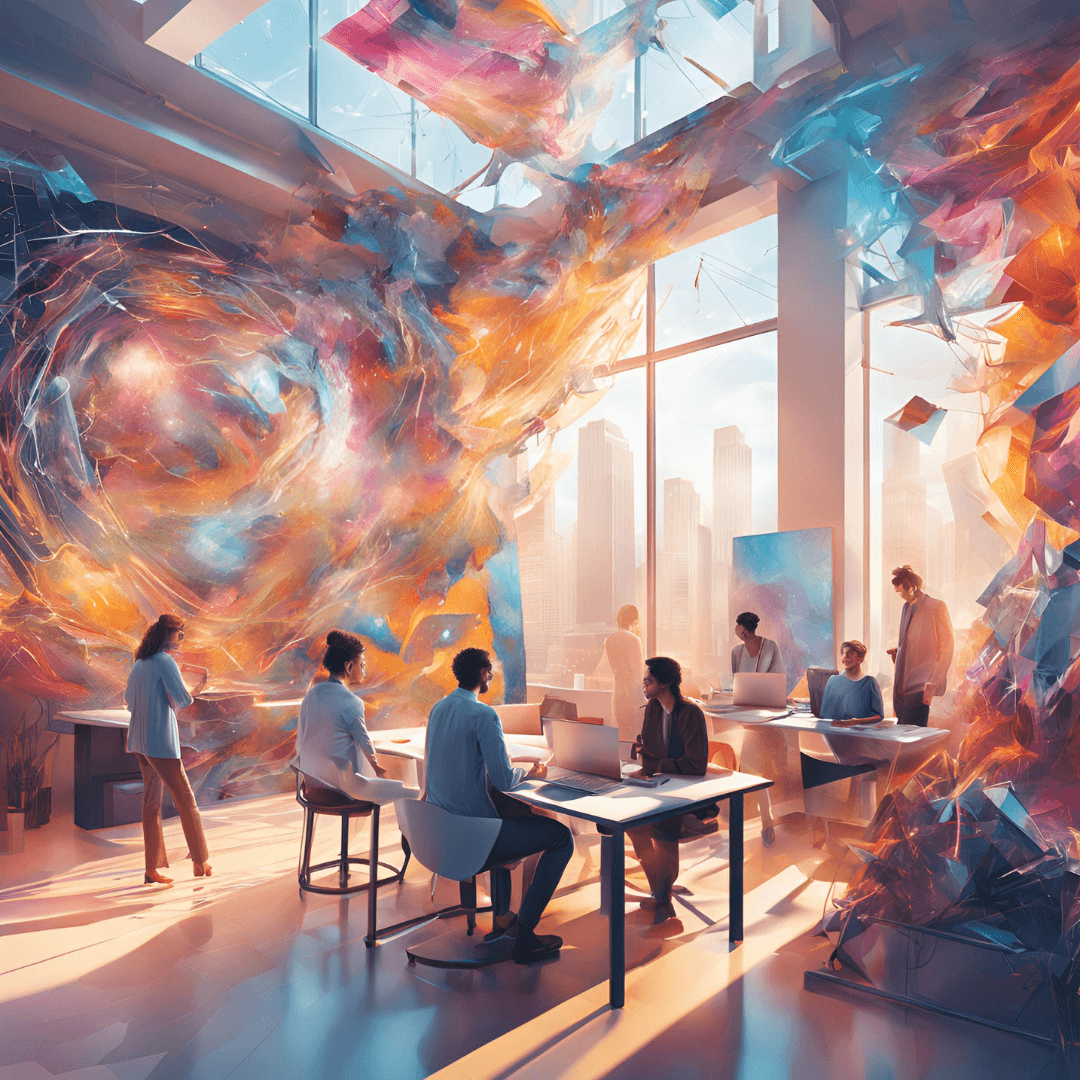
In the creative industries, generative AI has made a profound impact, reshaping processes in art, music, film, literature, and advertising. It empowers creators to push boundaries, automating routine tasks and enabling the rapid generation of innovative concepts. For instance:
- AI tools like DALL·E can create intricate digital artwork from textual prompts.
- In music, platforms like AIVA compose original tracks tailored to specific moods or genres.
Generative AI also opens new doors for personalization and efficiency, reducing the time and resources required for content creation. The result is a transformation in how creativity is harnessed and delivered to audiences.
“Generative AI in creative industries is transforming the way content is produced, from AI-generated art to music composition,” making it an indispensable tool for modern creators and businesses.
Common Applications of Generative AI in Creative Industries
Generative AI’s versatility spans multiple creative domains, each benefiting uniquely from its capabilities. Below are some of its key applications:
- Visual Arts:
- Generative AI tools like MidJourney and DeepDream enable artists to create stunning, original digital artwork.
- Designers use AI for rapid concept generation, developing logos, product mockups, and advertisements.
- Music Composition:
- Platforms such as Jukedeck and AIVA allow musicians to compose original tracks using AI, suitable for films, games, or personal use.
- AI-generated melodies can be fine-tuned for specific genres, moods, or themes, providing creative flexibility.
- Film and Animation:
- AI assists in scripting, storyboarding, and even creating realistic visual effects.
- Tools like Runway ML are used for post-production tasks, including color grading and background generation.
- Literature and Content Creation:
- Writers leverage AI, such as ChatGPT, to generate story ideas, refine scripts, and create personalized content at scale.
- AI assists in crafting marketing slogans and ad copy, ensuring relevance and engagement.
- Advertising and Branding:
- AI platforms analyze audience preferences and generate targeted ad campaigns, optimizing messaging for different demographics.
Tools and Platforms Driving Applications:
Generative AI is rapidly gaining traction across various creative industries, thanks to platforms that leverage machine learning algorithms to produce impressive outputs in art, music, content creation, and design. Below are some of the leading tools and platforms driving this shift:
- DALL·E: Text-to-Image Generation for Art and Design
DALL·E, developed by OpenAI, is a groundbreaking AI model capable of generating high-quality images from textual descriptions. This tool represents a significant leap forward in AI-generated content, particularly in the creative industries. By simply providing a text prompt, users can generate images that reflect complex concepts, emotions, or abstract ideas. The text-to-image generation capability has profound implications for art and design, enabling artists and designers to quickly conceptualize and create unique visuals that would otherwise require extensive time and resources.
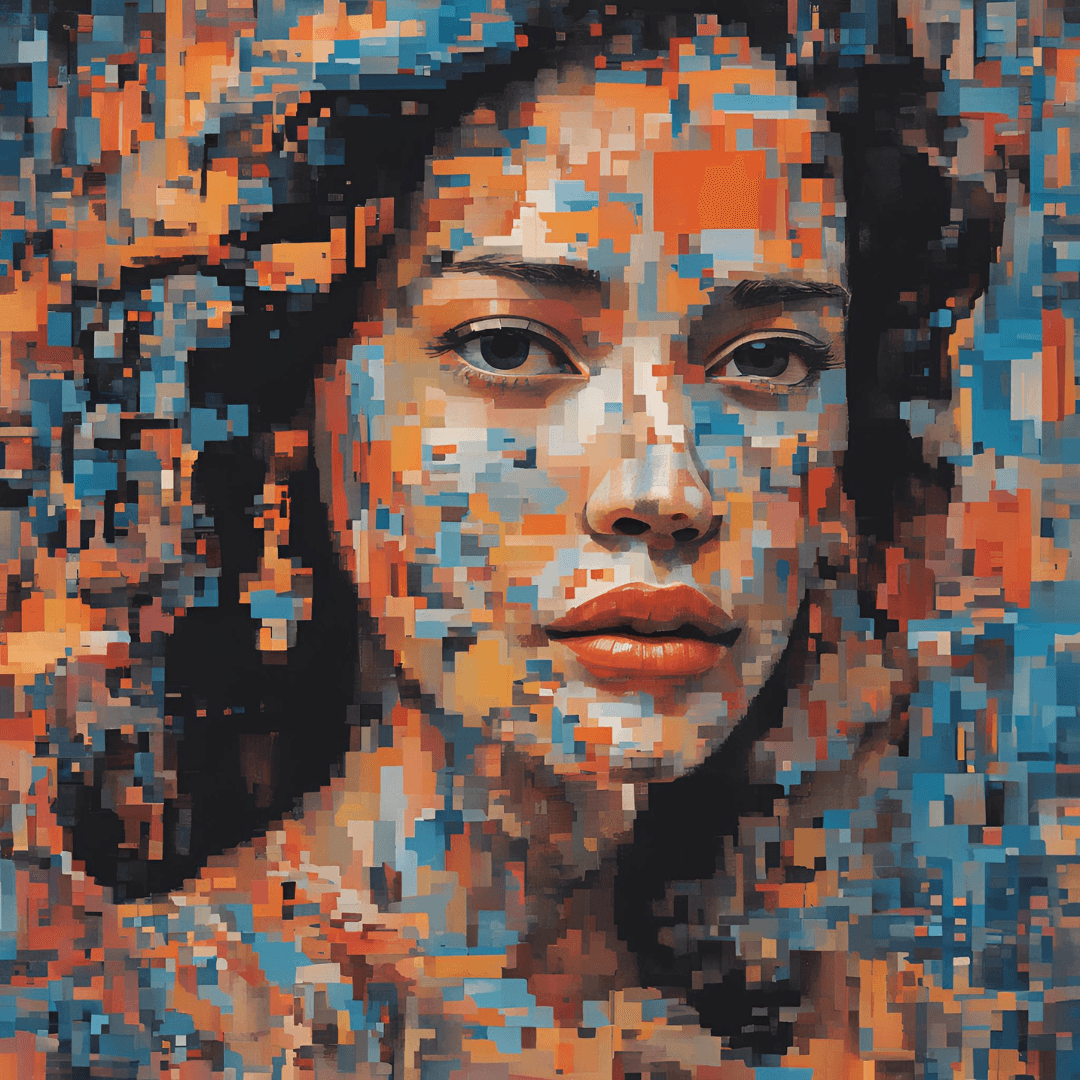
Applications:
- Art creation: Artists use DALL·E to experiment with new visual styles or generate references for projects.
- Marketing materials: Designers can produce custom visuals for advertising and branding.
DALL·E has become a go-to tool for AI in art and design, empowering creators to experiment without the limitations of traditional tools. Its ability to generate images that blend realism and abstraction allows artists to push creative boundaries, and it’s particularly effective in fields like graphic design, concept art, and digital illustration.
- AIVA: AI Music Composition Tailored to Mood and Genre
AIVA (Artificial Intelligence Virtual Artist) is an AI music composition tool designed to generate original music based on user inputs like mood, genre, and specific preferences. It uses deep learning to analyze and replicate music theory, allowing it to compose both classical pieces and more modern genres like jazz or pop. Generative AI for music composition allows musicians, filmmakers, and content creators to automate the process of music creation, which can be especially valuable when needing to produce background scores or soundtracks efficiently.
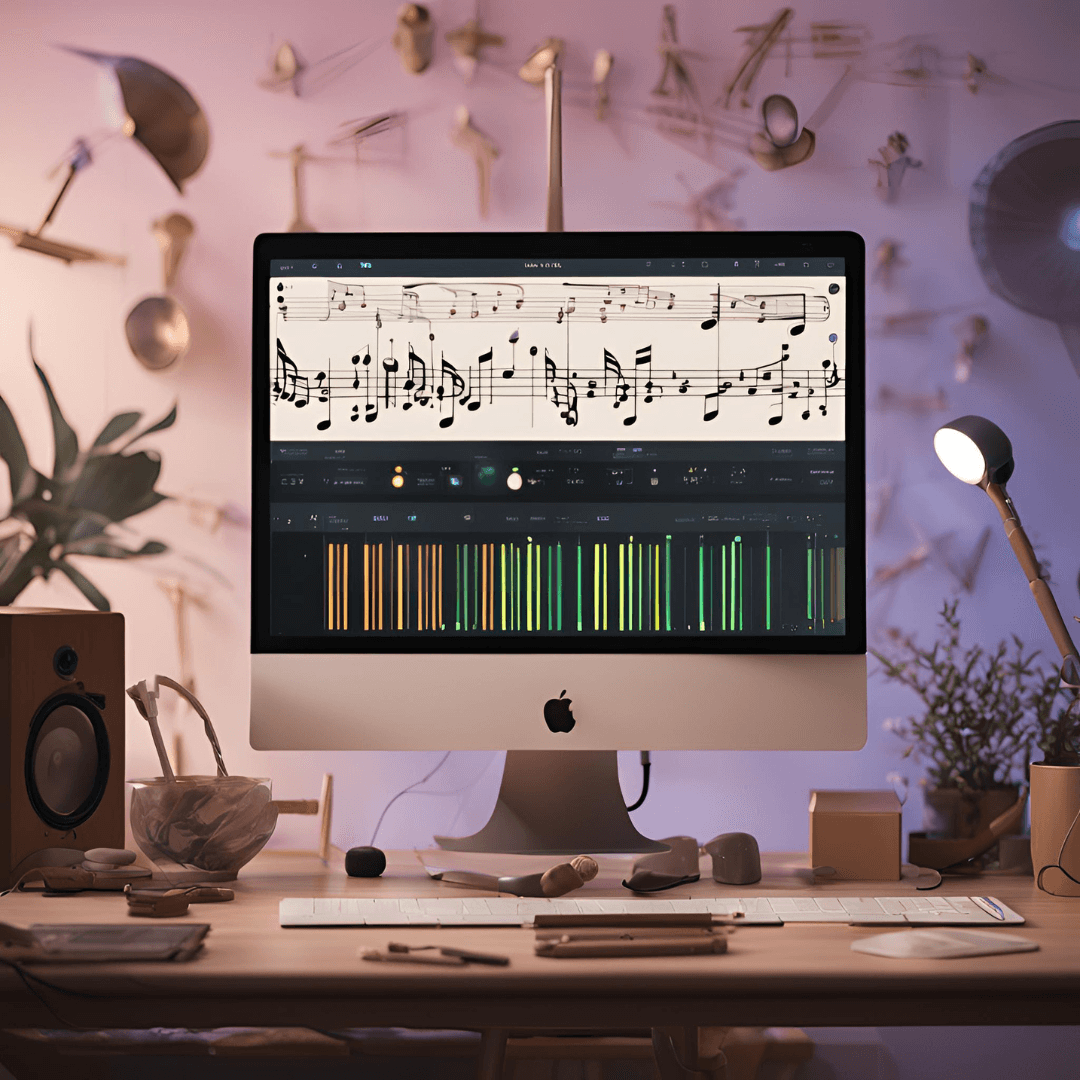
Applications:
- Film scoring: AIVA can be used to generate music for movies, TV shows, or advertisements.
- Personalized music tracks: Content creators can tailor tracks to specific themes or emotional tones for their projects.
AIVA helps both experienced musicians and those with minimal music knowledge to create high-quality soundtracks, while still maintaining a human touch in composition. By providing musicians with the ability to quickly generate music, AIVA allows for greater exploration and productivity in creative workflows.
- Copy.ai: Automated Content Creation for Advertising
Copy.ai is a platform that utilizes generative AI to produce written content for various purposes, especially in the advertising and marketing industries. It is capable of generating compelling copy for social media posts, product descriptions, blog articles, and more, all based on short prompts provided by users. The ability to generate relevant, persuasive content without the need for manual writing offers significant time and cost savings for marketing teams.
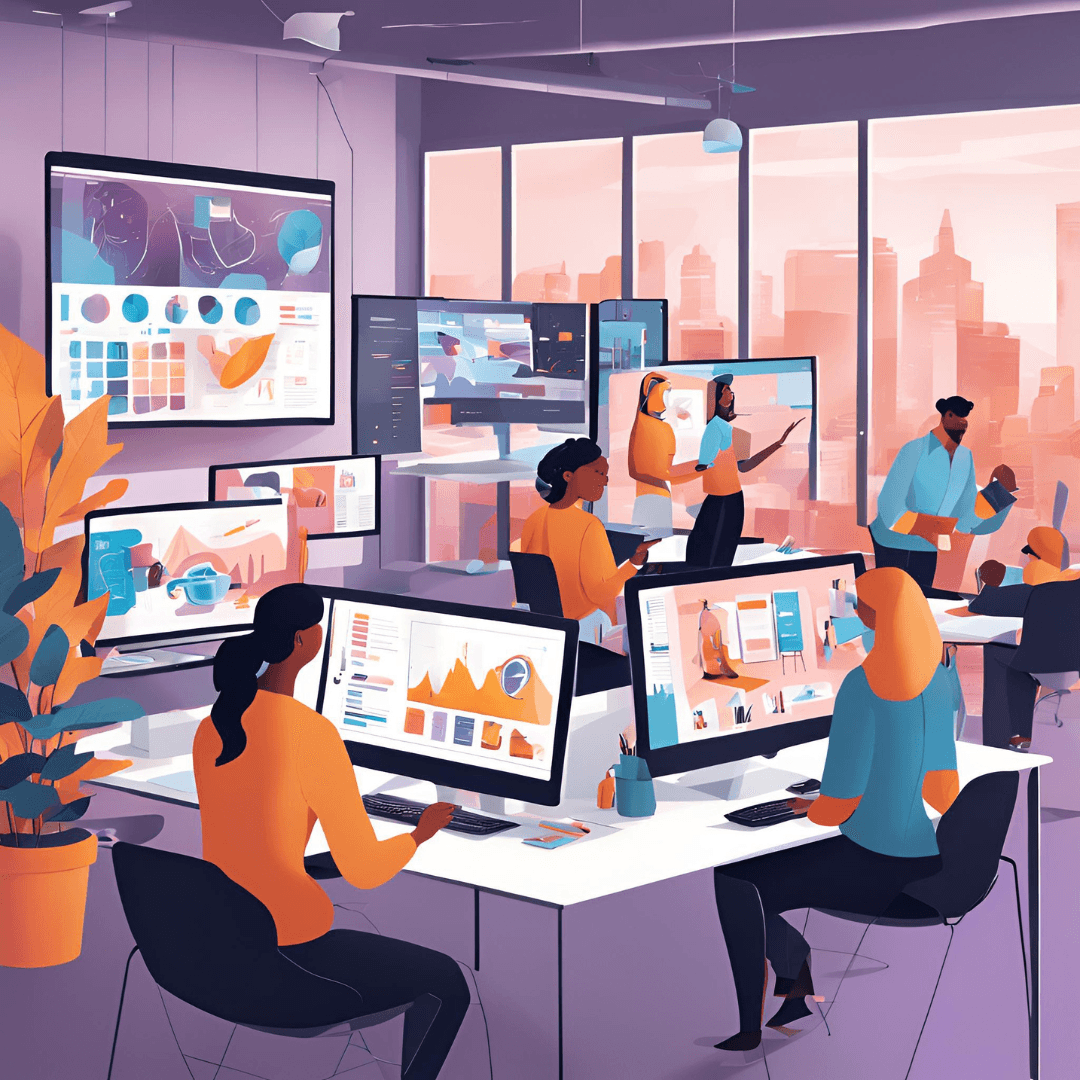
Applications:
- Advertising copy: Generating creative, catchy slogans and taglines for ad campaigns.
- Product descriptions: Producing engaging descriptions that resonate with target audiences for e-commerce platforms.
With the help of AI-generated content, platforms like Copy.ai enable marketing professionals to create content at scale while maintaining brand consistency. This tool, along with others in the same category, is transforming content creation in advertising, offering both efficiency and creativity.
“Some common applications include generating unique visual content, automating music composition, and even crafting marketing slogans.” These innovations streamline workflows, enabling creators to focus more on strategic and creative ideation.
How Generative AI is Transforming Art and Design
Generative AI has revolutionized the fields of art and design by enabling creators to explore uncharted territories of creativity. By leveraging advanced technologies like Generative Adversarial Networks (GANs) and diffusion models, artists and designers can now collaborate with AI systems to produce unique and groundbreaking works.
Applications in Art:
- AI-Generated Artworks: Generative AI can create paintings, sculptures, and digital art based on input prompts. Tools like DALL·E and DeepArt are frequently used to produce artworks that merge artistic styles or generate entirely new visual concepts.
- Creative Exploration: Artists use AI as a tool to experiment with unconventional ideas, such as blending different styles or reimagining historical art with a futuristic twist.
- Interactive Installations: AI is being integrated into interactive art exhibits, where algorithms generate real-time visuals based on audience interaction.
Applications in Design:
- Graphic and UI Design: Generative AI aids designers in crafting logos, layouts, and website interfaces by suggesting optimized designs based on branding inputs.
- Product Design: AI algorithms analyze trends and consumer preferences to create innovative product prototypes, from furniture to fashion.
- Text-to-Design Tools: Platforms like Canva AI and Runway ML help non-designers create professional-quality content with minimal effort.
How GANs Drive Innovation:
Generative Adversarial Networks (GANs) have been pivotal in this transformation. GANs consist of two networks—a generator and a discriminator—that work together to create and refine outputs. This iterative process allows GANs to produce highly realistic images and designs, blurring the line between human and machine-generated art.
Impact on Artists:
Generative AI serves as both a collaborator and a tool for professional artists. By automating repetitive tasks, such as creating base designs or refining details, AI frees up artists to focus on conceptual and strategic elements.
For example, “Generative AI for art and design allows creators to push boundaries, combining human intuition with machine-generated possibilities.”
The Impact of Generative AI on AI Creative Jobs
The integration of AI into the creative industries has brought about a paradigm shift in the nature of creative jobs. AI now plays a pivotal role in tasks ranging from graphic design to video editing, transforming workflows and creating new opportunities.
Emerging Opportunities in AI Creative Jobs:
- AI Specialists: New roles have emerged for professionals who design, train, and fine-tune generative AI models to meet creative goals. Examples include AI model trainers for artistic applications.
- AI Art Curators: These professionals curate machine-generated artworks for exhibitions, galleries, and digital platforms.
- Hybrid Roles: Traditional creative roles, such as art directors or writers, now require fluency in AI tools to enhance productivity and ideation.
Augmentation of Creative Professionals:
Rather than replacing human creativity, AI augments the capabilities of creative professionals:
- Efficiency Gains: AI automates repetitive tasks, like resizing images or color correction, allowing creators to focus on ideation and refinement.
- Enhanced Creativity: Tools like Runway ML and Adobe Sensei provide novel suggestions and design iterations, sparking creative inspiration.
Concerns About Job Displacement:
While AI creates new roles, it also raises concerns about job displacement in traditional sectors like graphic design or content creation. However, many industry experts argue that AI tools will serve as a collaborative partner rather than a replacement. By integrating AI into their workflows, professionals can stay competitive in the evolving market.
“AI creative jobs are emerging as a result of new technology, empowering artists to innovate while collaborating with machine-generated designs.”
How Does AI Affect Creativity Negatively?
While AI has unlocked new possibilities in the creative industries, it also raises significant concerns about its impact on human creativity. From questions of authenticity to over-reliance on technology, generative AI can have unintended negative effects on the creative process.
Challenges to Originality and Authenticity:
One of the main criticisms of AI in creative industries is its potential to dilute the authenticity and originality of human art:
- Derivative Works: AI generates content by analyzing vast datasets of existing works. This reliance on pre-existing material can result in outputs that lack genuine innovation or originality.
- Loss of Personal Expression: Art and creativity are deeply personal processes. Automating these tasks with AI risks losing the emotional depth and subjective nuance that make human-created art unique.
For example, AI-generated paintings may mimic famous styles but lack the personal vision or intent behind the original works.
Over-Reliance on Technology:
Another concern is the risk of creative professionals becoming overly dependent on AI tools, which can hinder the development of traditional skills:
- Skill Degradation: As AI takes over tasks like sketching, drafting, or music composition, artists may lose the opportunity to refine their foundational skills.
- Creative Laziness: The convenience of AI-generated content could lead to a decline in effort and imagination, as creators rely more on algorithms than their own ingenuity.
Criticisms in Real-World Contexts:
- In graphic design, tools like Canva AI automate logo creation, leading to criticisms that such outputs feel generic or lack uniqueness.
- In music composition, AI platforms like AIVA create tracks that, while technically sound, may lack the emotional resonance of human-composed music.
Ethical Concerns:
The question of authorship and ownership is another area of debate. When AI-generated content closely mirrors existing works, it raises concerns about plagiarism and intellectual property violations.
“While AI offers exciting opportunities, its overuse could dilute the human touch that makes art truly unique.”
The Future of Generative AI in Creative Industries
The future of generative AI in creative industries promises exciting innovations while also posing challenges that require careful navigation. From advancing tools to emerging ethical debates, the trajectory of AI is set to redefine the creative landscape.
Emerging Trends and Technologies:
- AI in Virtual Reality (VR): The integration of generative AI with VR is enabling creators to design immersive worlds for gaming, storytelling, and interactive art installations.
- AI-Driven Filmmaking: Tools like Runway ML are revolutionizing post-production processes, from editing to visual effects, allowing filmmakers to create high-quality content more efficiently.
- Generative AI in Advertising: AI can craft personalized marketing campaigns, designing visuals and slogans tailored to target audiences.
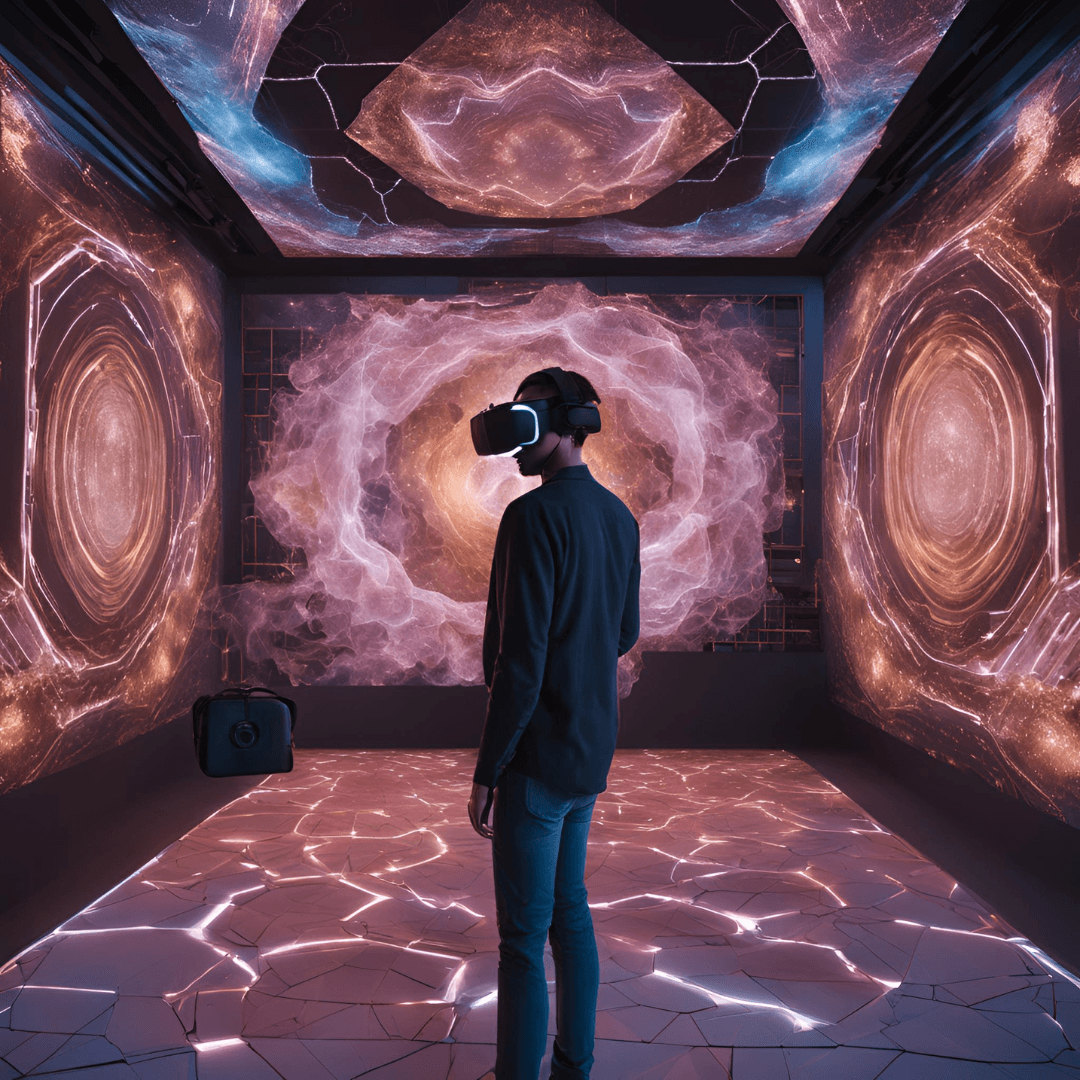
Ethical and Legal Considerations:
As generative AI evolves, questions around ownership and copyright become increasingly critical:
- Ownership of AI-Generated Content: If a machine creates a piece of art or a screenplay, determining who owns the rights (the developer, the user, or the AI itself) remains a gray area.
- Bias and Fairness: AI systems trained on biased datasets may perpetuate stereotypes, especially in industries like advertising or film.
Opportunities for Innovation:
Generative AI holds vast potential to unlock new creative possibilities:
- Collaborative Creativity: AI can act as a co-creator, offering suggestions, refining ideas, and automating repetitive tasks to free up artists for higher-level conceptual work.
- Sustainability in Art: By optimizing resource use, AI can contribute to more eco-friendly practices in industries like fashion and design.
The Road Ahead:
The future of generative AI lies in striking a balance between innovation and ethical responsibility. As the technology continues to evolve, creators must embrace AI as a tool while preserving the essence of human creativity.
“As generative AI continues to evolve, it will undoubtedly unlock new avenues for innovation in the creative industries.”
Conclusion: Embracing the Change – Creativity and AI
Generative AI in creative industries is transforming how art, music, design, and other forms of content are produced. From AI-generated content revolutionizing digital art to creating AI creative jobs, the landscape of creative work is evolving rapidly. However, while generative AI presents numerous possibilities, it’s important to balance these advancements with human creativity to preserve the authenticity, emotion, and intention that make art truly unique.
Key Takeaways:
- Generative AI is reshaping creative industries by enabling the automation of routine tasks while offering innovative ways for artists, musicians, and creators to express themselves.
- While there are concerns about the negative effects of AI on creativity, such as over-reliance on technology and loss of originality, these challenges can be mitigated by approaching AI as a tool for collaboration rather than replacement.
- AI creative jobs are expanding, offering new opportunities for those with expertise in AI and digital design. The future of creative work will likely involve human-AI partnerships that harness the strengths of both.
As generative AI in creative industries continues to grow, the possibilities are endless. It’s an exciting time for those who embrace AI-generated content and explore the innovative ways it can transform the creative process. Whether you’re an artist, musician, or designer, integrating AI into your workflow can enhance your creativity and open up new frontiers.
“Generative AI in creative industries is here to stay, and it’s essential for artists, musicians, and creators to harness its power while preserving the essence of human creativity.”
By embracing AI and integrating it into your creative practice, you can push boundaries, explore new ideas, and stay ahead in an industry increasingly influenced by cutting-edge technology.
Additional Resources and Next Steps
Generative AI is revolutionizing the creative industries, driving innovation in art, design, and content creation. To expand your understanding of this dynamic field, explore these related articles that dive into complementary and emerging AI topics:
- Neurosymbolic AI: The 3rd Wave of Artificial Intelligence
- Understand how the fusion of symbolic reasoning and neural networks is shaping the next generation of AI technologies.
- Agentic AI Systems
- Explore the potential of AI systems that act autonomously, making decisions and learning from their environments.
- BERT vs GPT: Comparing NLP Giants
- Discover the differences between BERT and GPT, two transformative models in natural language processing, and their applications.
- Artificial Photosynthesis
- Learn about the role of AI in driving advancements in artificial photosynthesis, a promising solution for clean energy production.
- AI in Everyday Life
- Explore the countless ways AI impacts our daily routines, from smart assistants to personalized recommendations.
- AI in Wildlife Conservation
- Find out how AI is helping to protect biodiversity, monitor endangered species, and combat illegal poaching.

